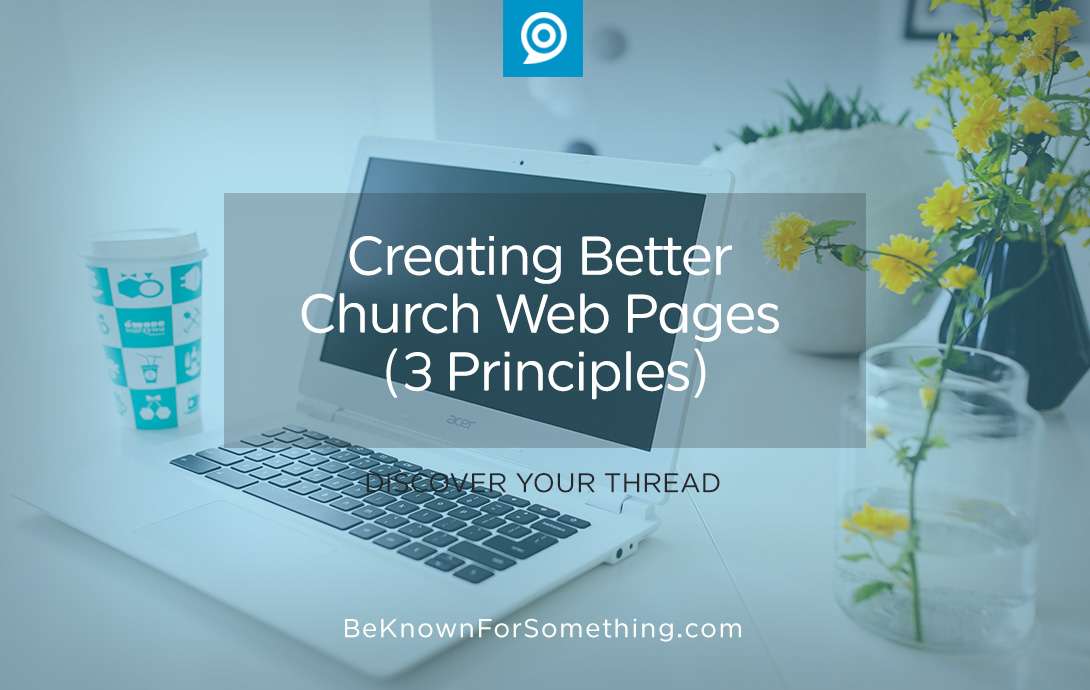Creating Better Church Web Pages (3 Principles)

Most churches have websites but sadly, most church websites are created so that many won’t be interested in looking at them. It’s a lot of wasted effort.
Let’s fix that. Let’s commit to building our websites so that we deliver what people (your congregation and community) are looking for. That’s summed up in one word: speed. Everyone arrives at a website (except for YouTube, Netflix, Facebook or similar) and they want to discover the information they seek as quickly as possible.
If they don’t find it fast? They’ll give up quickly, get frustrated with the website, or pick up the phone and call your receptionist for the answer. If this sounds familiar to your church, here are 3 principles to creating better web pages:
- A headline that matters. Everyone sees headlines first. But rarely will someone read a long headline, usually only a few words at the beginning. So, to create a great headline, drop small words (articles) at the beginning and get to the point. Ensure keywords are used close to the front of the headline. Then make sure the headline promises the content on the page. Make people anticipate receiving it and resist being overly clever! Keep it short (and possibly utilize parentheses and/or numbers since they seem to get more attention).
- Edited content to provide the facts. Since the headline creates anticipation for the content, make sure you craft your content so people receive the information as quickly as possible. How to do that effectively? Keep the word count low (consider 50-100 words on informational pages; 300-500 words on blog pages), try to use bullet points (that correspond with the number you used in the headline), and use photos or short videos to add to the page content or summarize it. Advocate for your audience! Don’t let people submit web content that’s too long or not direct enough. Stop using passive voice.
- A reason to look elsewhere. Since you have someone’s attention with the content, make sure that you strategically use links throughout to take someone on a journey to another part of your website (ministry). Pretend that someone has asked you a question that your page has answered; then consider how to extend the conversation so that you can highlight another part of your ministry or give them an added bonus that they’d love. Even be bold enough to add a direct call to action at the bottom of your content. Something like: “Read our safety process. It ensures your children are protected here” at the bottom of your children’s ministry announcements. And have the “here” or the entire call-to-action as a link to the process.
Church websites are critical to your church’s success. Get them right and you can reduce communication costs and delight your audience more. Once people start trusting your website to deliver great content (whenever they need it, and wherever they are) they’ll become less reliant on costly print materials.
Want 25 Game-Changing Resolutions?
Related Posts

Christmas Church Communication Strategy: 3 Nativity Lessons
Christmas isn’t just another event on the calendar; it’s a strategic opportunity to communicate the Gospel to a world that’s

3 Church Leadership Skills That Transform Your Ministry
You didn’t accept a call to ministry just to maintain the status quo. You were called to lead to inspire,

How to Create a Church Marketing Strategy That Reaches Your Community
You’ve been called to lead a church that makes a difference in your city. That means developing a clear church

